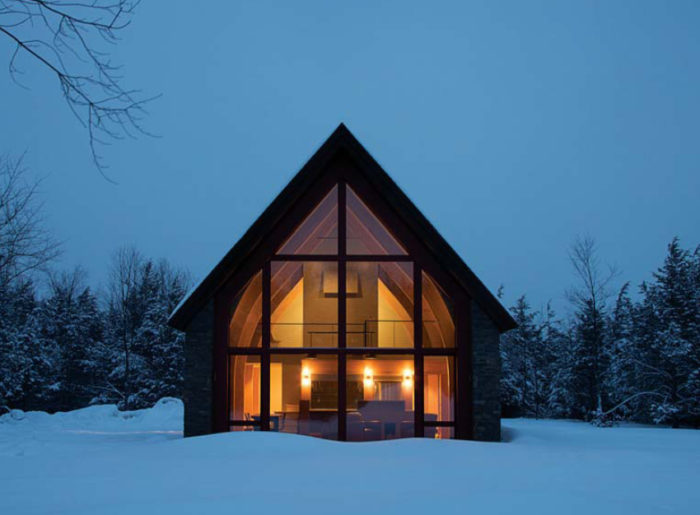Homes in cold places with harsh winters can experience damage from snow, cold temperatures, and strong winds. It is crucial to find the right materials that can withstand extreme cold weather conditions, handle the extra moisture, and provide structural support to the home. The right materials will keep the indoors warm, provide structural strength to the building, and most importantly, the materials will not break the bank. Finding these materials and using them the right way might be difficult for some. That’s why we have created a concise guide to help you understand the aspects to look at when you want ultimate protection for your house from cold, freezing winters.
Asphalt Roofs
Asphalt roofs are a nice option to consider when looking to make an affordable yet effective choice. Conventionally, asphalt is used for waterproofing from the moisture build-up The indoors can be insulated using asphalt to keep the temperature warm. Besides opting for asphalt shingle roofs, cedar wood shingle is another consideration if you want to maintain a traditional look and ensure home protection from cold weather. However, it is important to evaluate the expected weather conditions in your area and then plan on selecting the material for the best outcomes. Furthermore, study the type of material you are selecting, as each has varying durability and strength.
Picking Windows
Always make sure that the windows you select have a glass thick enough to withstand strong winds. Multi-pane windows can work well under such conditions. Selecting good-quality windows with double or triple panes can significantly reduce the heating expenses of your home. The window glass has a vacuum built up between them that can easily insulate. Some manufacturers even add gases that can act as insulating material.

Metal Roofs
The first building material you should consider looking at is the roofing material. A good roof will not only protect you from extreme weather conditions but also provide structural support and the strength to endure the snow build-up. A variety of roofing materials are available to choose from which have varying strength, and durability when used in cold environments. In our opinion, a metal roof is a good consideration when you want your structure to withstand harsh winters. Furthermore, metal roofs are inexpensive and require little t no maintenance for many years. Nowadays, metal roofs are coated with chemicals to keep the metal surface rust and moisture-free that further improving the durability of the roofing material. The metal roofs allow easy installation of shingle roof guards to help you remove the excess snow build-up effectively. These roofs can handle heavy snow easily as they are designed to help the snow build up slide off automatically to the surface. Besides adding snow guards, some roofing companies also give you the option to add heating cables to metal roofs that can remove snow accumulation. Snow guards and heating cables come in handy during extreme snowfalls and cold temperatures, as massive snow build-up on the roof can lead to ice sheet formation.
Indoor Carpets
Carpets can provide the extra warmth, insulation, and comfort that your indoors require. Most people prefer installing hardwood flooring as it looks aesthetically pleasing. However, when in cold temperatures, hardwood flooring contracts, making the flooring uneven and prone to damage. The extra moisture generated from the cold weather will further deteriorate the quality and strength of the flooring. Unlike hardwood, carpets are a great option as they remain unaffected by the weather and are able to provide insulation.
Installing Fiberglass
You can find a variety of fiberglass insulation options for your home. The material is sturdy and can help in insulation. When considering fiberglass, buy the one having an R-value of more than 49. Fiberglas is also non-flammable, making it a safe option for home protection against the cold winter. Besides installing fiberglass, you can add a layer of spray foam to strengthen the internal structure. The foam is applied to the walls and the required areas in the form of a liquid, which then converts itself into a foam-based material.
As you consider the above-mentioned tips t protect your home, don’t forget to take care of the pipes for any leakage, repair holes and cracks in the walls, and use water pipes insulating materials like heat tape that can prevent water from freezing in the pipe. Living in cold temperatures is not difficult if you adequately choose the construction materials for your home. The right materials will not only provide warmth but also help strengthen the structure that will last for years to come while keeping your home warm and welcoming in the cold.






